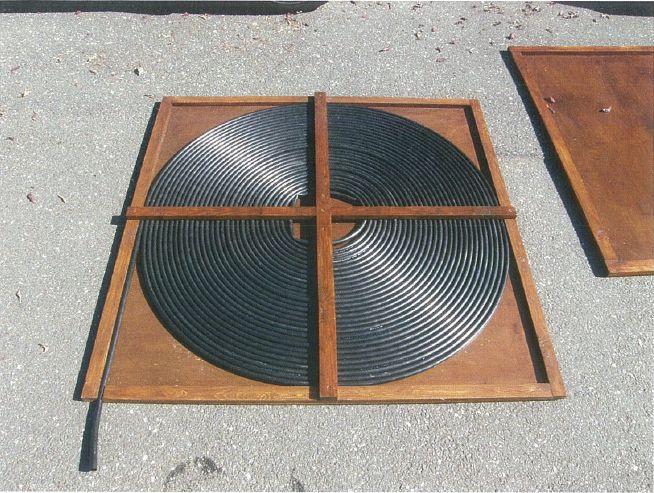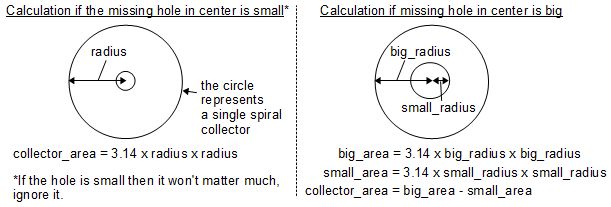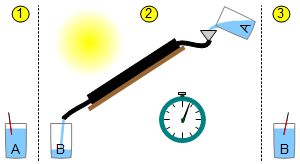Solar Pool Heating - Sizing a DIY or commercial system
Sizing a DIY solar pool heater
DIY black pipe (hose/tube) systems
An experiment when making a spiral/coil pipe solar pool heater for a pool in Tuscany showed that their pipe captured the suns rays and turned them into heat with 78.9% efficiency. This is around the same efficiency as for commercial black rubber/plastic flat panel solar heating systems, meaning that the same sizing methods used for commercial systems can be used for black pipe type DIY systems.

If you want to know what length of pipe to go with and you don't want to build a test collector first, or just want a rough idea of how much pipe to get, then:
- Use one of the calculators at one of the vendor's websites listed below in the section sizing a commercial solar pool heating system. The calculator will tell you what area of collector you need for your pool, basing it on pool surface area. When they ask you for a collector panel size, just put anything in. It's the total area we're after.
- Figure out which pipe you're going to go with. Find out the outer diameter.
- Take the required collector area which you got in step 1 and divide it by the pipe outer diameter which you got from step 2. This is the length of pipe you need.
Alternatively, if your black pipe system uses coiled spirals and you've already built a test spiral/collector, you'll need to know how to calculate the area of that spiral, which is essentially a circle. The following diagram illustrates how to do this for a single spiral collector. Note that if you didn't coil it tightly at the center then you might have to subtract the missing area of the center.

Now that you know the area of a single collector, see the section on sizing a commercial solar pool heating system below for finding out the total area you'll need. The vendors' calculators will tell you what area of collector you need for your pool, basing it on pool surface area. When they ask you for a collector panel size, just put anything in. It's the total area we're after. Divide that total area by the area of one of your collectors to find out how many you need.
Alternatively, you can do some experimenting and use the worksheet given in the following subsection.
DIY pipe and non-pipe systems
Regardless of whether your DIY panels made with black pipes, vacuum tubes, Coroplast sheets, ..., then you can to make a small test collector first and do the same type of experiments and calculations that Tuscany one did. A worksheet follows that does these calculations. Note that rather than calculating how much collector area you'll need to heat your pool during a day, it calculates how much you'll need to heat your pool during the time it takes to replace all the water in your pool once.
DIY solar pool heater sizing worksheet
Step 1. Build a test collector
Build enough of a collector to do a test that can heat some water. Don't build your collector(s) yet since you don't know how much to build.
Step 2. Measure the temperature increase from your test collector

As shown in the diagram, fill a one US gallon container (one litre if you're using the metric system) with water, call it container A. Arrange your test collector in full sunlight at the same angle as your finished collector(s) will be at. Also arrange it so that you'll be able to pour the water from container A, through the collector and into a second container B. The direction of water flowing through the test collector should be the same as it will be in your finished system. To do the test, measure the temperature of the water in A. Then pour it through the collector into B. Time how long it takes from the time you start pouring until all the water is in B. Measure the temperature of the water in B.
Step 3. Calculate the equivalent number of test collectors needed
Sizing a commercial solar pool heating system
To figure out how many collectors you need for a commercial solar pool heating system you simply go to the website of the manufacturer or dealer and use a calculator which they provide.
Since a DIY black pipe system has equivalent efficiency to a commercial flat panel system, you can use the same calculators to find out the collector area you need.
Here are some commercial solar pool heating system websites that have calculators. You might want to try a few different ones as their results may vary.
